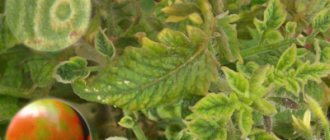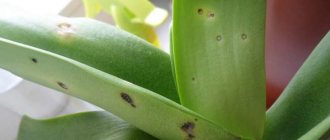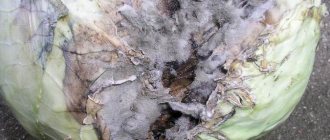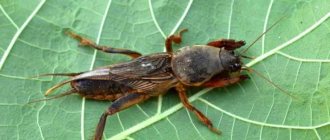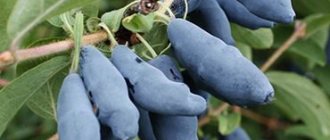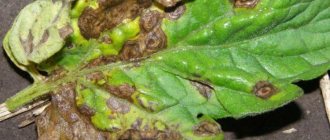Home Diseases and pests
The most common diseases of rose leaves and stems include powdery mildew, spot, cancer, rust, cytosporosis and gray rot. If you do not fight rose diseases, as practice shows, the bushes will bloom less, their leaves will lose their decorative appearance, and soon the plants will die altogether. Check out the photos, descriptions, methods of treating rose diseases with the best drugs and immediately start fighting the disease.
- 2 Rose rust: photos and treatment when fighting the disease
- 3 Black spot disease of rose leaves: photo and how to treat
- 4 Bacterial rose cancer disease: photos and treatment of flowers
- 5 Fungal disease burn of rose branches: photos and control measures
- 6 Treatment of roses to protect against cytosporosis disease
- 7 Gray rot on roses: how to deal with the disease
- 8 Interesting facts about rose diseases
- 9 How to treat roses against diseases: effective remedies
- 10 How to spray roses against diseases: the best preparations
Fungal disease of roses: powdery mildew: photo and treatment
Fungal disease of roses powdery mildew in the photo
When the fungal disease of roses is powdery mildew, a powdery coating appears on young leaves, shoots and buds; thickening and curvature are observed.
As can be seen in the photo, powdery mildew on roses appears as a whitish coating, which is a mycelium and sporulation of the fungus:
Powdery mildew on roses
Powdery mildew on roses appears as a whitish coating (photo)
The pathogen overwinters in the form of mycelium in the kidneys. The development of the disease is facilitated by excess nitrogen fertilizer, lack of calcium in the soil, drying out of the soil, too light sandy or, conversely, cold, damp soils.
The disease develops especially strongly with insufficient lighting and high air humidity. Sudden changes in temperature, drafts, drying out of the soil and other conditions that disrupt the normal life of plants reduce their resistance to disease. Tea and hybrid tea roses with more delicate foliage are especially affected.
Rose varieties that are resistant to powdery mildew are those that have dense, glossy leaves of the “Gloria Day” type.
To treat powdery mildew on roses, when the first signs of the disease appear, it is necessary to spray the bushes with Topaz, Chistotsvet, Fundazol or Skor. At temperatures above 22°C it is possible to spray with “Grey Colloid” or “Tiovit Jet”. If necessary, to combat this disease of roses, treatments are repeated as new growth and powdery mildew spots appear on them.
Powdery mildew
Powdery mildew
The most common disease among roses. It gets its name from the white powdery coating on the flower, which soon releases a dew-like liquid.
Causes. Like other ailments, it appears during times of high humidity, too much fertilizer or lack of oxygen. The infection first attacks young shoots and then spreads through the air. The Chinese rose also lends itself well to endemics. The disease can appear at any time when the summer coolness appears.
It is a white coating, which after a few weeks can cover the entire flower. Also, the bud becomes bent and the flower loses its color.
Treatment. To prevent such ailments or to prevent treatment, potassium phosphate fertilizers are used. GreenCure will be an excellent helper here.
A soap and soda solution works well for an already present disease, which should be used to treat all the roses in the garden. Such prevention should be carried out once a week. Using a solution of colloidal sulfur, you need to wash the flower once every ten days.
Rose rust: photos and treatment when fighting the disease
Rust of roses in the photo
With this disease of roses, the affected parts of the shoots become bent and thickened. In spring, orange dust appears on the stems near the opening buds and at the root collar. This is the spring sporulation of the fungus, the causative agent of the stem form of rust. The fungus overwinters in plant tissues infected in previous years. The disease develops more intensely in years with warm and wet springs.
Rust fungi not only take away nutrients from the plant, but also severely disrupt its physiological functions: they increase transpiration, reduce photosynthesis, make breathing difficult and worsen metabolism.
With rose disease, rust on the leaves on the underside in summer, small, red-yellow pads of summer spores form, which can give rise to several generations and infect new plants.
In the second half of summer, winter sporulation begins to appear on the underside of the leaves in the form of small round black pads.
Look at the photo - if this rose disease has severely affected the plant, the entire leaves turn yellow and fall off prematurely:
Affected parts of rose shoots (photo)
With rose disease, rust on the leaves on the underside in summer, small, red-yellow pads of summer spores form (photo)
The spread of rust fungus spores occurs with air flow, water, and planting material.
To protect roses from this disease, one-way nitrogen fertilization should be avoided. In the fall, it is necessary to remove and burn the affected foliage, and in the early spring (before the buds open) spray the plants and the soil around them with iron sulfate (1-1.5%). The soil under the bushes must be loosened and mulched to reduce infection.
To treat rose rust, it is necessary to carefully and promptly trim shoots affected by the stem form of rust; from the moment the buds open, re-spray the plants with Bordeaux mixture (1%) or its substitutes (“Oxychom”, “Abiga-Peak”, “Hom”, “ Copper oxychloride", "Ordan").
Next, you can see photos and descriptions of rose diseases such as black spot, bacterial cancer, gray rot, branch burn and cytosporosis.
Fungal diseases
Powdery mildew
Fungi begin their harmful activity at the beginning of summer in warm, damp weather with sharp jumps in day and night air temperatures.
The disease is detected by the appearance of a white coating on the leaves of the rose. These stains resemble spilled flour and are easily removed. Biologically, they represent a colony of Sphaeroteca pannosa spores.
With downy mildew, dark spots appear on the undersides of leaves and then spread throughout the plant. If nothing is done, brown dots appear on the affected leaves. Then the leaves curl, wither, and fall off. At this stage of the disease, flowering stops.
To treat powdery mildew, systemic drugs are used. The fungicide Fundazol is suitable for the queen of flowers. The solution should be sprayed on the roses three times with a break of 10 days. Two weeks after the last spraying, it is necessary to treat the diseased bush with a biofungicide. A good drug is Fitosporin M. Summer residents also use Topsin-M.
Rust
Fungal disease can occur in mid-June. The causative agents of rust are the fungi Phragmidium disciflorum. It manifests itself by the appearance of bright red dots on the leaves or branches of the rose. If you do not treat the rose, these dots will begin to multiply and merge into single dark brown spots. Rust can kill the entire bush, not just individual branches.
Rust progresses in damp weather. Also, excess nitrogen in the soil stimulates the development of the disease.
To avoid rust, rose bushes and the ground around them should be treated with a 1% solution of copper sulfate in early spring. In late autumn, the treatment should be repeated, but with a solution of ferrous sulfate. Its concentration should be 3%. It is also worth treating roses with a 1% solution of Bordeaux mixture before and after flowering.
Cortical necrosis
This type of disease manifests itself in affected areas of the cortex. Their color differs noticeably from the natural one. If you do not notice the symptoms and do not begin treatment, the bark cracks and dies. A depression appears at the site of the crack.
The causative agents of necrosis diseases are pathogenic bacteria and fungi.
Infectious burn
Stem cancer of the bark of roses occurs from the activity of fungi. They love musty, damp air and also thrive in the soil in winter if the rose bushes are covered with film. When the soil freezes, the development of fungi stops, but they do not die. When the soil thaws, the fungi become active again.
An infectious burn is initially detected by the appearance of red-brown spots on the branches of the rose. Also, at the initial stage of bark cancer, instead of spotting, brown or black belts may appear around the stem.
Next, tubercles begin to appear on the surface of the stems. They contain fungal spores. Under their influence, the bark begins to lighten, and small ulcers appear on its surface. Later, the bark cracks and the stem dries out.
Unfortunately, this disease cannot be cured. You should not cover roses with plastic for the winter. It is better to use natural materials or garden fabric for this.
Common (European) cancer
The causative agents of common rose cancer are fungi of the genus Nectria. They often end up in our gardens along with imported seedlings.
A sign of an incurable disease is the appearance of longitudinal cracks in the bark. The presence of overgrown, elevated callus along the cracks is characteristic. This word means callus in Latin. Biologically, it is a neoplasm.
Such calluses often appear on old stems at their bases. As the disease develops, they also appear on young shoots. Affected stems gradually wither and dry out under the influence of the disease.
Diplodia necrosis of the cortex
Bark disease is manifested by the appearance of multiple shallow longitudinal cracks in the bark along the stems. At the same time, the color of the bark changes, it becomes dark chestnut. Later, small tubercles appear in which fungal spores develop. After a short time, the stem dries completely.
Favorable conditions for the occurrence of this disease are damp, musty air due to the excessive density of the bush. Also, fungal spores enter the bush through working tools that have not been disinfected for a long time. Excess nitrogen in the soil can also cause necrosis.
The disease cannot be treated. All affected stems must be removed and destroyed by fire.
Tubercular necrosis of the cortex
This also incurable disease occurs from exposure to the fungus Tubercularia vulgaris. It manifests itself by the appearance of pink-red tubercles on the surface of the stems, inside of which fungal spores develop. Later, the bark changes its color to brown and dies.
Diaport stem cancer
Diaporte cancer occurs under the influence of the fungus Diaporthe umbrina. When the disease appears, purple areas appear on the bark, which soon begin to swell. The bark of the affected stem darkens and acquires a light brown color.
Later, at the site of the swelling, the bark cracks, and throughout its entire thickness. Next, pycnidia (fungal colonies) begin to form in these cracks. They look like small black bumps that gradually grow.
There is no cure for this disease as such. Diseased stems have to be burned.
For prevention, roses are sprayed with universal 1% solutions of copper sulfate or Bordeaux mixture.
Cytosporosis
Cytosporosis occurs under the influence of the fungus Cytospora rosarum. As a result of the disease, the bark on the branches begins to become wet, and brown tubercles form on it. In the spring, fungal spores emerge from them and begin their destructive activities. A colony of spores looks like golden or red drops.
Spores are carried throughout the plant by rain or harmful insects. Under the influence of these microorganisms, the leaves wither and then the branches dry out.
Cytosporosis is also not treatable. When it appears, you need to cut off all affected branches as quickly as possible, without waiting for them to dry out, and burn them. All cut areas must be covered with crushed charcoal.
To prevent the disease in early spring, before the buds begin to swell, spray the rose bushes with a solution containing copper.
Drying branches
Branches on rose bushes can dry out due to the influence of various types of fungi. As a result of their activity, the bark turns brown. At the same time, stroma appears on it in the form of colonies of fungi, and the disease begins to progress from this. How to treat a rose?
There is no recipe for this disease. However, if you follow the rules for caring for roses, it never occurs.
These include:
- spraying bushes in early spring and late autumn with a 1% solution of copper sulfate, Bordeaux mixture or a solution of the same concentration of Abiga-pik;
- timely pruning of dry branches;
- cleaning and burning fallen leaves;
- correct feeding.
Gray rot
Gray rot on roses occurs under the influence of the fungus Botrytis cinerea. Its name is botrytis. Floribunda roses are most susceptible to gray rot. Also, tea rose hybrids are not resistant to this disease.
Gray rot is manifested by the appearance of small brown dots on the branches. These spots grow quickly and merge into single large spots. At the same time, a gray coating appears on the flower petals. As a result, the flower loses its former beauty. The stain can even cover the entire branch. After this, the foliage on the affected branch begins to wither and fall off.
It is not possible to cure a rose from gray rot. When it appears, all diseased branches must be burned.
It is worth saying that only weakened bushes are affected by gray rot. Therefore, you need to carefully care for roses.
To prevent this disease, it is advisable to spray the bushes with a 1% solution of copper sulfate in spring and autumn, and to prevent the bushes from becoming too dense in the summer. When insects appear, it is worth spraying the bushes with insecticides, because pests contribute to diseases.
Black spot disease of rose leaves: photo and how to treat
Rose leaf disease black spot in photo
Black spot disease of roses is also called marsonina after the name of the fungus that causes the disease. In the second half of summer, dark brown, almost black, spots of different sizes form on the leaves. The leaves turn brown and often fall off prematurely. Spots may also appear on the green bark of annual shoots.
Plants with prematurely fallen leaves sometimes begin to grow again, as a result of which they become very weak and bloom poorly the next year.
Under the skin of the leaves, the mycelium of the fungus, the causative agent of the rose blight disease, develops, forming radiantly growing strands.
As can be seen in the photo, with this disease of roses, radiance is clearly visible at the edge of the spots:
With this disease of roses, radiance can be clearly visible at the edge of the spots (photo)
Mycelium of the fungus, the causative agent of rose blotch disease, develops under the skin of the leaves (photo)
This disease of rose leaves manifests itself more strongly in dense plantings, in shaded areas, and in poorly ventilated areas.
Measures to combat this disease include:
- correct agricultural technology that increases plant resistance;
- careful collection of affected leaves in the fall and burning them;
- spraying plants during the growing season with preparations containing copper, which are used in the fight against rust.
- To treat this disease of roses, it is recommended to use a special preparation for spraying (Skor to protect roses), which is a systemic fungicide with preventive and curative action.
Treatments must be started when the first signs of the disease appear and repeated after each rain or heavy dew.
These photos show how to treat black spot disease of roses:
Rose cytosporosis: symptoms and plant treatment against this disease
Cytosporosis is also a fungal disease that is found everywhere in Russia and other countries of the world
. It can affect rose bushes, ornamental shrubs, fruit trees, and nuts.
Cystoporosis on roses (pictured):
Another name for the disease is infectious drying out
. Under favorable weather conditions for the development of cytosporosis in plants, not only individual shoots, but also entire perennials can dry out.
This disease primarily affects perennials that are severely frozen in winter, weakened due to drought or sunburn, and also if the bushes were pruned at the wrong time.
The cystoporosis fungus first settles on those areas of the bark that die off
. On the affected areas of the cortex, large tubercles of orange color with a reddish tint appear.
It is important to know!
The causative agent of cytosporosis first passes upward through the tissues of the shoots, and when the stems dry out, it begins to descend downwards, while killing all the healthy cells of the rose bushes with its waste products.
Cytosporosis usually affects weakened plants, so in order to prevent this disease from appearing on rose bushes, it is necessary to prevent damage to the vegetative mass and roots.
How to determine by the bark of a rose what disease it has
It is also necessary to carry out a number of activities that are aimed at increasing the viability of these flowering perennials:
- carrying out timely correct pruning;
- fertilizers must be applied according to schedule;
- properly treat the soil;
- compliance with the irrigation regime;
- protect the vegetative mass of rose bushes from sunburn;
- increase the resistance of bushes to cold;
- all shoots with symptoms of the disease should be cut out, including up to 4-6 cm of healthy wood.
The bushes of the “queen of flowers” need to be pruned in a timely manner; in this case, the plants can be protected from this disease.
Bacterial rose cancer disease: photo and treatment of flowers
Bacterial rose cancer disease in the photo
With bacterial canker of roses, growths of varying sizes form on the root collar and roots of plants. Sometimes they are barely noticeable, but often reach several centimeters in diameter. The growths have an uneven tuberculate surface. They consist of soft tissue, first white, then brown, and are decomposed by bacteria in the soil.
There are also hard, lignified growths that grow every year. Less commonly, the above-ground part is affected - trunks and branches, mainly in climbing and standard remontant roses. Here, tuberous nodules and tumors of various sizes are formed.
Cancer-causing bacteria affect many plants belonging to different families. Infection occurs through wounds on plant roots, from the soil, where bacteria can persist for a very long time.
The development of the disease is facilitated by high soil moisture, abundant manure fertilizer, root damage, and alkaline soil reaction.
When replanting, plants with damaged root collars must be destroyed and growths on the lateral roots must be trimmed. To treat this disease of roses, after pruning, the roots are immersed for 5 minutes in a 1% solution of copper sulfate, and then washed in water and dipped in a liquid mixture of clay and sand. Avoid excess manure fertilizer, destroy insects that damage the roots, and do not dig up the soil near the bushes.
Look at the photo of rose cancer treatment:
Root rot
Root rot disease occurs under the influence of various types of pathogenic fungi. But, unlike damage to the above-ground part, it is very difficult to notice it in time. When visible signs appear, it is too late to save. The only way to combat root rot is to try to prevent it.
Tracheomycosis wilt
The culprits of tracheomycotic wilting of rose roots are two microscopic soil fungi - Fusarium oxysporum and Verticillum. They are very tenacious. They can remain in the soil in a viable state for a very long time and, under favorable conditions, begin to multiply quickly.
As a result of their work, the roots become brown-black, the mycelium grows into the vessels. Juice circulation becomes difficult, the plant lacks nutrients, young buds and shoots turn brown and dry out. All this leads to the death of the plant.
To prevent the disease you need to:
- When planting, treat the roots of the seedling with baktofit, maxim.
- Carefully inspect the seedling and discard the plant with affected roots.
- Choose a place for planting that is not flooded with water.
- Make sure the soil is not heavy.
At the first symptoms of the disease, you can water the soil with the biofungicide Fitosporin-M or Gamair. But most likely this won't help.
White sclerotial rot
This is a root disease caused by a fungus of the genus Sclerotinia sclerotiorum. It affects young roots. They stop absorbing nutrients from the soil and become covered with a white coating similar to cotton wool. The above-ground part begins to wither and dry out, sometimes watery spots appear on the leaves. Rose dies. You can try to save it by spilling the soil under it with a biofungicide solution (Fitosprin, Gamair, Alirin-B).
To prevent this disease, treat the roots of seedlings with bactofite. Do not plant them in lowlands or on heavy soils. Immediately discard suspicious seedlings.
Fungal disease burn of rose branches: photos and control measures
Fungal disease burns rose branches in the photo
Branch burn is a fungal disease in which reddish spots initially appear on the branches, later darkening in the middle; the red-brown border persists for quite a long time. As the spots grow, they ring the branches. Tissue sagging may form above the affected area. Diseased branches usually dry out at the end of summer.
The development of “burn” is facilitated by excess humidity under the winter shelter.
To avoid severe damage to roses, cover should be removed earlier in the spring. Sick and frozen branches must be pruned and burned in a timely manner.
As shown in the photo, when treating this disease of roses, plants need to be sprayed with preparations containing copper, as in the fight against rust:
Proper agricultural practices (timely application of fertilizers, loosening and watering) help reduce the severity of the disease. It is necessary to achieve good ripening of the wood until the end of the plant growing season.
For the winter, plants with already fallen leaves should be covered in dry weather if possible, so that increased humidity is not created under the cover. Before covering, unripe shoots with green leaves are removed, and the plants are sprayed with a 3% Bordeaux mixture or a 1.5% solution of ferrous sulfate.
Useful tips
- Plant disease-resistant, low-maintenance varieties of roses. For example, Topaz.
- Do not arrange a rose garden on flooded soils.
- Do not plant bushes close to each other.
- Regularly trim dried stems from bushes.
- Water and fertilize at the roots.
- Carry out foliar feeding of the bushes in the evening in calm, warm weather, but in such a way that by night the leaves and stems of the roses have time to dry completely.
- Once every two weeks, do preventive spraying of the bushes with an aqueous solution of biofungicides.
- The tool you worked with while caring for roses should be disinfected with a weak solution of potassium permanganate.
- The soil around bush roses should be free of weeds or fallen leaves.
- Before covering roses for the winter, treat them with a 3% solution of iron sulfate.
- Do not use polyethylene for insulation.
- Don't be lazy to treat your roses in spring. To do this, you need to cut off all the dried stems from the bushes and spray the bush with a 1% solution of copper sulfate.
- In summer, follow the rules for applying fertilizers to the soil.
As you can see, the list of rose diseases is huge, and their photos are impressive. However, there is no need to be afraid of this. Provided proper care of the flower garden, knowledge of the description and treatment methods, the queen of the garden will bloom magnificently.
Olga Danilina
Treatment of roses to protect against cytosporosis disease
Cytosporosis is a fungal disease of roses in the photo
Cytosporosis is a fungal disease that is widespread throughout the world. Roses affect a number of ornamental shrubs, as well as pome and stone fruit trees and nuts.
Cytosporosis is also called infectious drying out. In some years, it leads not only to the drying out of individual branches, but also to the death of plants. Bushes that are weakened as a result of freezing, drought, sunburn, untimely pruning, etc. are especially susceptible to this disease.
First, the causative agent of the disease settles on dying individual areas of the bark. Large, clearly visible orange-red fungal pycnidia tubercles appear over the entire area of the affected bark, protruding from under the skin.
Look at the photo - with this rose disease, cracks form at the border of the affected and healthy tissue:
The causative agent of the disease moves first upward through the tissues and vessels of plants, and after the branches dry out - downward, killing cells adjacent to the zone of its spread with its toxins.
Cytosporosis disease should be considered as a secondary phenomenon associated with a general weakening of plants, therefore, when choosing control measures, it is first necessary to protect the bushes from mechanical and other damage.
Also regularly carry out activities that increase the vitality of plants - timely and correct pruning, fertilizing, tillage, watering, protection from sunburn, increasing winter hardiness, cutting and burning branches with signs of disease, capturing up to 5 cm of the healthy part of the branch.
Early spring spraying of roses with a 1.5% solution of copper sulfate on the “sleeping” buds and 3% Bordeaux mixture on the green cone to some extent inhibits the spread and development of the disease.
Pruning bushes at the optimal time protects roses from the appearance of cytosporosis.
Prevention and precautions
To prevent rose diseases, the following recommendations must be followed:
- select unpretentious varieties of shrubs with the required resistance to cold and rain;
- inspect seedlings for infection and treat them with biofungicides before planting;
- choose loose soils, well-lit and ventilated areas of the garden for planting;
- maintain distance between bushes;
- treat roses once every 2-3 weeks, regularly loosen the soil and trim shoots;
- do not plant plants in lowlands and shallow waters;
- pour fertilizer and water under the roots;
- fertilizing and wrapping should be carried out in dry weather;
- spray the bushes with vitriol solution after spring pruning;
- Disinfect instruments with chlorine and iodine-containing products, and wash fabric gloves at high temperatures.
Gray rot on roses: how to deal with the disease
Gray rot on roses (photo)
Gray rot of roses (botrytis) mainly affects buds with pedicels, the tops of young stems and leaves - in damp weather they become covered with a gray fluffy coating.
First of all, this disease of garden roses attacks weakened plants, and most often those with white and light pink flowers. The buds on roses affected by botrytis do not open, rot and fall off. Small brown spots appear on the petals, the leaves turn yellow and also fall off.
Foci of infection persist in plant debris in the form of mycelium, which forms spores in the spring. The fungal spores are then spread by insects and wind. Therefore, an undesirable “neighbor” for roses is, for example, garden strawberries, which are very susceptible to botrytis.
Gray rot appears on roses when plantings are thickened, or if the rose garden is watered late in the evening, when the rose leaves do not have time to dry before night.
How to deal with gray rot of roses in your garden? Measures to combat and prevent this rose disease are the same as against other fungal diseases.
Bacterial cancer
Bacteria can cause cancer of rose roots and stems. Root cancer is caused by the bacterium Agrobacterium tumefaciens, which promotes the appearance of growths on roots and root collars. Thickenings complicate the nutrition of the rose, which leads to slower growth, cessation of flowering and death of the plant.
Bacterial stem canker, caused by the pathogen Pseudomonas syringae, can be seen in earlier stages. The foliage of an infected bush becomes covered with dark spots, and brown areas appear on the stems, which later die. Young shoots dry out.
Interesting facts about rose diseases
Speaking about rose diseases, we can highlight several interesting facts:
- You can determine how resistant roses are to disease by their leaves: if they are dense and shiny, covered with a waxy coating, the variety is resistant. The fact is that wax prevents infection from penetrating into the leaf, which means it prevents infection.
- There are no completely disease-resistant varieties. Even those varieties that are labeled “disease-resistant” in catalogs lose this valuable quality after 5-6 years, as diseases adapt to changing conditions and mutate, like the flu. Therefore, old varieties of roses can only be found in amateur gardens, but not in flower farms or on city streets.
- Gray rot, for example, multiplies especially quickly in wet weather, and considering that many gardeners plant roses densely, the soil under the plants does not dry out quickly enough after rain or watering.
- Leaves that do not dry out for a long time or cool nights or dew in the morning favor black spot. Powdery mildew, and among pests - spider mites, on the contrary, love dry and hot weather. Therefore, roses growing near southern walls or fences are especially affected by these pests.
- Florists can to some extent influence the development of diseases and the appearance of pests, as well as predict their occurrence. Strong, well-groomed plants are less likely to get sick, and they are more resistant to pest infestation.
Watch the video “Rose Diseases”, which shows all the main plant diseases and methods of combating them:
Viral infections
Viruses reproduce by inserting themselves into the genome of a plant cell. A cell infected with a virus cannot be saved. You can only detect the diseased shoot in time and remove it. The danger of these viral diseases is that they do not manifest themselves externally for a long time. And when signs of the disease become visible, it is already too late.
When studying viruses, they were named after the plant on which they were identified. Therefore, the name of the virus does not mean that it is dangerous only for this plant.
All of the following infections are treated in approximately the same way. Any damaged branches found should be cut off and burned. If the affected area is large, the entire bush needs to be dug up and burned. Do not forget to disinfect the tool with alcohol or a one percent solution of potassium permanganate.
For prevention, the rose can be treated with chemicals for pest control (Inta-Vir, Karate).
Leaf striping
The culprit of the disease is the rose streak virus. On the leaves it appears as brown rings and borders of veins. On the shoots there are brown streaks and spots. The rose stops growing and stops flowering.
Viral wilt
Caused by the virus of the same name (withering virus). It prevents the plant from developing, forming flowers, the leaves turn into strings, and the bush dries out.
Tomato bronzing virus
The cause of the disease is tomato bronzing virus (TBV). Its symptoms:
- leaves become covered with light spots;
- the tops of the veins on the leaves become lighter;
- at the second stage of disease development, leaf tissues die;
- leaves turn yellow;
- the flower is deformed;
- streaks may appear.
Tobacco necrosis virus
It is caused by the virus of the same name - VNT. Transmitted from the sap of an infected plant. It can be carried by pests.
Symptoms of the disease:
- leaves are deformed;
- no flowering;
- darkening of veins;
- necrotic spotting;
- dwarfism
Tomato ringspot virus
The causative agent of the disease is the virus of the same name - Tomatto ringsport virus. Signs of the disease:
- leaf wrinkling;
- chlorosis, jaundice;
- ring, necrotic spots;
- changing light areas to dark ones.
Transmitted through the sap of damaged plants. Carriers can be nematodes and thrips.
Rezucha mosaic virus
Transmitted by a virus - Arabis mosaic virus. At the first signs of the disease, small spots appear on the leaf blades. Progression of the disease leads to the appearance of chlorosis. The leaf veins turn white.
Tobacco curly streak virus
The culprit of this disease is the Tobacco rattle virus. Its symptoms:
- deformation of leaves and shoots;
- a mosaic pattern appears on the leaves and flowers;
- spotting.
To prevent the spread of the virus by pests, it is necessary to periodically treat plants with insecticides.
Jaundice
The causative agents of this disease are mycoplasmas. It is carried by leafhoppers and psyllids. Signs of the disease:
- the veins of young leaves turn yellow;
- the leaves become pale and rise up;
- as the disease progresses, the entire leaf turns yellow;
- the bush becomes weak.
How to treat roses against diseases: effective remedies
All flower growers, without exception, are interested in how to treat roses against diseases. The most effective remedies for rose diseases include the following drugs.
"Alirin-B" is a biological preparation based on beneficial microorganisms isolated from natural sources. Effective in the fight against powdery mildew of ornamental and other plants.
"Glyokladin" is an analogue of the well-known drug "Trichodermin". Effective in combating a wide range of fungal diseases, such as fusarium, white and gray rot, late blight, root and stem rot, black leg and clubroot.
"Gamair" is a drug intended to protect against a wide range of bacterial diseases: bacterial leaf spot, bacterial blight, bacterial cancer.
"Topaz" is a systemic fungicide for the protection of ornamental, pome, stone fruit, berry, vegetable crops and grapevines from powdery mildew. This preparation for treating roses against diseases can be used as a protective, therapeutic and exterminating agent against rust. The drug is available in the form of an emulsion concentrate.
As an exterminator against a high degree of powdery mildew, Topaz is used in high concentrations (up to 10 ml), carrying out 2 sprayings with an interval of 7 days.
The drug provides reliable protection against powdery mildew even against a high infectious background. Topaz is not phytotoxic and does not leave stains on treated leaves and fruits. As a prophylactic agent, it reduces the number of treatments, as it is effective for 40 days. The drug meets modern safety requirements for humans and the environment. It is quickly absorbed by plants, which reduces the risk of the drug being washed off by rain.
To avoid the emergence of resistance in powdery mildew pathogens, it is recommended to alternate “Topaz” with contact copper-containing preparations and sulfur colloidal and not to use it on the same crop more than 4 times per season.
“Topaz” is compatible with most drugs used in gardens against diseases and pests. The speed of exposure is 2-3 hours after spraying.
What else can you use to treat roses against diseases and to prevent infections in your garden?
“Chistotsvet” is a new drug for protecting flower and ornamental crops from diseases (fungicide).
Directions for use: the required dose of the drug in a special container is dissolved in a small volume of water. Then, with constant stirring, bring the volume of the working solution to 5 or 10 liters. The working fluid is prepared immediately before use and used completely on the same day. The period for safe exit of people to carry out manual work is in 7 days. Speed of action of the drug: 2 hours after treatment.
Period of protective action: during preventive treatments - 7-15 days, in conditions of intensive development of diseases - 7 days.
Therapeutic effect of the drug: within 4 days from the moment of infection. Amateur gardeners are not recommended to mix this drug with other protective agents when spraying plants.
"Chistotsvet" is an analogue of the drug "Raek".
“Fundazol” is a systemic preparation and protectant for planting material to protect against a range of diseases.
When using the drug, fill the container for treating planting material 1/3 with water, then add the required amount of the drug, mix thoroughly and add the remaining amount of water.
Spray the plants with a freshly prepared solution in dry, windless weather, preferably in the morning (before 10 o'clock) or in the evening (18-22 o'clock), evenly wetting the leaves. The working solution cannot be stored!
“Quick for protecting roses” from black spot, ornamental and fruit crops from a complex of diseases. It is a systemic fungicide with preventive and curative action. The contents of the ampoule must be diluted in water.
Spray with freshly prepared solution in dry, windless weather, wetting the plants evenly.
Working fluid consumption: on roses - up to 1 liter per plant; on flowering plants and ornamental shrubs - up to 10 liters per 100 m2.
Do not store the working solution! Release time for Manual works: 3 days. Compatibility with other pesticides is not practical. The period of protective action is 7-14 days. Exposure period: two hours after treatment. Not phytotoxic. Cultures are tolerant to the drug. There is no resistance. Low danger to bees (class 3). Toxic to fish, do not allow to enter water bodies.
“Copper oxychloride” (wettable powder) is one of the copper-containing preparations for combating diseases of vegetable and fruit crops.
When using, dilute the contents of the package (40 g) in 10 liters of water. It is necessary to spray the plants with a freshly prepared solution in dry, windless weather, preferably in the morning (before 10 o’clock) or in the evening (18-22 o’clock), evenly wetting the leaves. In recommended doses the drug is not phytotoxic. The period of protective action is 7-10 days.
The drug is dangerous for bees and fish; do not treat during flowering. Do not allow to enter water bodies.
These photos show effective remedies for treating rose diseases:
Non-communicable diseases
The cause of non-infectious diseases is a violation of the general rules for caring for roses, as well as the regime and balance of fertilizing.
Sunburn
Young and fragile shoots and leaves usually suffer from it. The active spring sun is especially dangerous for them. When burned, the leaves become bronze-brown in color. Dead areas turn white.
Prevention of burns on sunny and bright days consists of organizing shading of rose bushes. For this you can use any available material.
Physiological aging
Roses are a living organism, and all living things tend to age. Over time, the root collar of grafted roses thickens, bacteriological and fungal diseases accumulate, and the rose loses its attractiveness. You can’t fool time, it’s impossible to fight it. But with proper agrotechnical care, you can still help the rose a little.
Pesticide toxicity
Pesticides are used to rid roses of diseases and pests.
- Fungicides will get rid of parasitic fungi.
- From harmful bacteria - bactericides.
- For insect pests - insecticides.
- For ticks - acaricides.
All these are faithful assistants to the gardener, but they must be used correctly:
- Use as directed.
- Follow the dosage.
- It's right to alternate. Pests get used to them, and the soil and plant receive an excessive dose of toxic substances.
- Use under appropriate weather conditions and in the right phase. Otherwise, at best, they will be useless, and at worst, they will die.
Chlorosis
If the rose's leaves turn yellow but the veins remain green, it means it has chlorosis. The process of chlorophyll formation in the leaves is disrupted. This occurs due to a lack of iron in the rose. The cause of the disease may be soil in which too much lime and manure have been added. Don't make these mistakes.
To replenish iron deficiency, apply foliar fertilization with iron chelate.
Phosphorus deficiency
Signs: leaves become smaller, green above, red below, fall off early, shoots lag behind in development, weak and uneven flowering.
Treatment: feeding with superphosphate (1 tablespoon / 10 liters of water).
Nitrogen deficiency
Signs: the leaves lighten, become narrow, and red dots appear on them.
Treatment: fertilizing with urea solution or ammonium nitrate (1 tablespoon / 10 liters of water).
Potassium deficiency
Signs: leaves become reddish-purple in color, become smaller, and fall off.
Treatment: fertilizing with a complete complex fertilizer with a high potassium content (1 tablespoon/10 liters of water).
Calcium deficiency
Signs: the root system develops poorly, the stems weaken and die, the leaves curl, the buds do not open.
Treatment: feeding with calcium nitrate.
Magnesium deficiency
Signs: tissues die along the central vein of the leaf, discolored spots form, leaves fall off prematurely.
Treatment: fertilizing with complex fertilizer with a high magnesium content (1 tablespoon/10 liters of water).
Manganese deficiency
Signs: leaf chlorosis.
Treatment: treatment of the plant with 0.5% manganese sulfate.
Iron deficiency
Signs: leaf chlorosis.
Treatment: foliar feeding of the rose with iron-containing preparations.
Locking the root system
Signs: When the roots become soaked, they die, yellow spots appear on the leaves, they fall off, and the plant dies.
Treatment: avoid stagnation of water. If necessary, dig up the rose, cut off the rotten roots, and plant in a new place.
How to spray roses against diseases: the best preparations
Don’t know what to spray roses against diseases to protect the flowers? Then use the following drugs, which are considered one of the best.
"Abiga-Pik" is a copper-containing contact fungicide intended to combat a complex of fungal and bacterial diseases on vegetable, fruit, ornamental and flower crops, grapevines and medicinal plants.
The drug is used during the growing season by spraying plants.
A 50 g package is designed to prepare 10 liters of working solution for treating 100 m2.
The contents of the bubble are pre-dissolved in 1 liter of water and, with thorough mixing, brought to 10 liters with water - a working solution for spraying is obtained.
Spraying is carried out prophylactically or when the first signs of the disease appear. Plants are treated by evenly covering the shoots, leaves and fruits with the working solution.
Attention! All solutions should be prepared in plastic, glass or enamel containers.
This medicine against rose diseases provides reliable protection of plants from diseases even under unfavorable weather conditions. The preparation contains an adhesive that allows the active substance “Abiga-Peak” to adhere firmly to the treated plant surface.
Very important! "Abiga-Pik" is compatible with almost all known modern insecticides and fungicides. Easy to use, non-toxic. The product does not generate dust when preparing the working solution. The prepared solution, but not used due to weather conditions, can be stored for a long time.
"Abiga-Peak" has a beneficial effect on the quality of grown products. When using it, good ripening of young shoots is observed.
The best remedies for combating rose diseases are shown in the photo:
"Tiovit Jet" is a remedy for combating diseases of flower and fruit crops.
Directions for use: dissolve the dose of the drug in a small amount of water, then, gradually stirring, add water to 10 liters. Treat with a freshly prepared solution in dry, windless weather, ensuring uniform wetting of the leaves.
"Tiovit" has good adhesion, has a contact effect and an active gas phase; practically non-toxic for birds, bees, fish.
The advantages of the drug are that it is simultaneously a fungicide, an acaricide, and a microelement; provides reliable plant protection for 7-10 days; can be used for preventive spraying, has good compatibility with other pesticides.
“Colloidal sulfur” is used mainly to combat powdery mildew and various types of herbivorous mites on flower crops. It is effective only at air temperatures above +20...+22°C, since sulfur vapors work.
Mode of application. When preparing the working fluid, the drug is first stirred in a small amount of warm water until creamy, and then water is added, mixing the composition well (it is better to soak the drug the day before, 2-5 hours before treatment).
The last processing time before harvest is 3 days.
The drug is not dangerous for humans and warm-blooded animals. “Colloidal sulfur”, as a rule, does not burn the leaves.
However, many gooseberry varieties drop their leaves after processing. Therefore, you should not use sulfur to control American gooseberry powdery mildew or spray roses near this bush.
Remember! Before treating rose diseases, you must carefully read the instructions for use of a particular drug.
- Author: admin
Rate this article:
- 5
- 4
- 3
- 2
- 1
(145 votes, average: 3.9 out of 5)
Share with your friends!
The main diseases of rose bushes and methods of treating them
Rose bushes, like other cultivated plants, are often affected by various diseases. In this case, the vegetative mass most often suffers - leaf blades and shoots.
Most often, roses suffer from powdery mildew, spotting, cancer, rust, cytosporosis and gray rot.
At the first appearance of symptoms of any disease on the foliage, flowers or stems of this perennial, it is necessary to begin treatment of the shrub. Otherwise, the disease spreads quickly, the foliage curls and falls, flowering will be poor, and as a result the rose will die.
All the main diseases of this flowering shrub and the most effective methods of combating rose diseases will be described below.
The content of the article:
1. Diseases of roses and their treatment 2. Powdery mildew on rose bushes 3. Rust on roses 4. Black spot 5. Bacterial cancer 6. Bacterial burn of rose shoots 7. Cytosporosis of roses 8. Gray rot on roses 9. How to treat roses against diseases
Prevention of rose diseases
It is impossible to avoid diseases 100%, since the health of seedlings depends on many factors, including weather conditions. For example, black spot appears when the soil is waterlogged and the seedlings do not have time to absorb all the moisture. But an equally popular disease, powdery mildew, on the contrary, harms the plant during dry periods. To keep your roses healthy, you need to periodically inspect the bushes for damage to prevent disease in the initial stages.
To prevent diseases and damage, you must follow 5 simple rules for growing roses:
1. It is important to cut off damaged, dry and painful shoots on the bush for the winter, burn foliage and other parts of the seedling that may contain pathogenic bacteria.
2. Throughout the year, carry out phosphorus-potassium fertilizing, which helps the plant increase immunity.
3. It is important not to overfeed the seedlings with nitrogen in the first half of the season, and after mid-summer, stop applying nitrogen fertilizers altogether.
4. Inspect your favorite roses throughout the season to prevent severe infection of the bush, which can lead to death.
5. For prevention, treat the bushes with drugs, for example, Topaz or Alirin-B.
No less important in the successful cultivation of roses is the site chosen for planting. It should be a sunny place, protected from winds and with a high groundwater table. By following these simple rules, you can achieve successful establishment and growth of seedlings that will delight you with vigorous fragrant flowering year after year.
Rose diseases are divided into several categories: bacterial diseases, including root canker, various spots (black spot, for example, or ceproscora), and fungal diseases such as rust or the equally common powdery mildew)
Measures to combat rust, how to cure a rose from rust
When fungal spores enter the plant, the active formation of mycelium begins, and the parasites multiply at enormous speed. A rose can be cured of rust only with the help of systemic drugs that penetrate the cellular structures of the plant and kill the fungus from the inside. Contact agents will not help treat rust.
Over time, the disease will not only destroy the bush, but will also spread to all neighboring crops.
Pest Control
Pests and diseases of Chlorophytum - causes and control
There can be many pests in the garden in the form of insects, which, when affecting plants, lead to their illness and death. To save vegetation, it is recommended to take timely measures to destroy them.
Green aphid
Attacks rose and rose bushes. Appears in open ground and in pots. The pest is large. Green color.
In the spring, after wintering, larvae hatch from the eggs. These are females without wings. Only the next offspring will be winged. It will be able to fly to other plants, forming new colonies.
Young shoots and buds are often affected. The shoots become crooked. The buds do not open at all.
Green aphids attack the shoots and buds of climbing roses, preventing the latter from blooming
To cure and protect the plant from the pest, it is recommended to buy special chemicals. If necessary, treat the bush after half a month until the aphids completely disappear.
Spider mite
The insect has small dimensions - about 0.5 mm. Can only be seen through a magnifying glass. It poses a great threat to indoor and garden plants. It feeds on flower cells, drinking their juice. Causes irreparable harm to the rose.
You can get rid of insects using antiparasitic drugs:
- Fitoverm;
- Aktofit;
- Neoron;
- Aktellik;
- Fufanon.
The first treatment kills the adults. The eggs remain. Spraying is carried out for a month to destroy all pests. The plants are watered first.
Interesting! There are mites, for example, demodex, which provoke human diseases. Rosacea is an inflammatory process of the skin, which differs in stages.
Rose leafhopper
An insect measuring 3.5 mm. Oblong shape. Pale yellow or green. It feeds on the sap of living plants. The creature is omnivorous. It is difficult to get rid of the pest due to its mobility. Sensing danger, it jumps from one bush to another.
Insect control is complex. In autumn, sanitary pruning of trees and bushes is carried out. Fallen leaves, which may contain leafhopper larvae, are disposed of. In spring, treatment is carried out with special means.
The rose leafhopper is an omnivorous insect that feeds on more than just roses.
Roseate sawfly and leafcutter bee
Externally they resemble small wasps. Dangerous for young roses. The pest lays eggs that resemble caterpillars. You can fight them manually by collecting insects. If there are a lot of them, the bushes are treated with insecticides.
The leafcutter bee is similar to the honey bee. Pests cut out pieces of foliage, feeding on it. To get rid of them, you need to destroy the flowering weeds that attract leaf-cutter bees.
Beetles on roses, weevils and bronzeweed
Weevils and bronze weevils feed at night and hide during the day. Their larvae are found in the ground. They eat the root system of roses. Adults sit in the flower itself. Chemicals are used to kill pests. Although beetles can be collected by hand. They are big enough.
Walnut moth and cutworm
The nutcracker forms swellings on the plant, reaching 50 mm. Can only be eliminated with pesticides. In addition to chemical treatment, mechanical control is carried out. Trim diseased areas of the flower.
The armyworm feeds at night. More often we see only traces of her vital activity. Insecticides are used in the fight.
Interesting! All modern plants can be found in the identification atlas. This is a unique book that allows you to reveal basic information about the flora of our planet.
Do not be afraid of diseases and insects that affect roses. It is important to recognize the problem in time and take measures to eliminate it.


